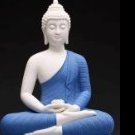[Myanmar] Tibetan Pair Set Selves On Fire At Lhasa Temple
-
Recently Browsing 0 members
- No registered users viewing this page.
-
Topics
-
-
Popular Contributors
-
-
Latest posts...
-
15
UK Migrants in taxpayer-funded UK hotels accused of rape, assault, theft, and other crimes
Another good example of suppression from the BBC, or perhaps it's only mis-information 😀😀 https://www.bbc.com/news/articles/cgeqwv98d55o How can this be, when 25,000 have arrived over the last 6 1/2 months ? A where is the cost of putting them with up with Private Landlords ? Does that take it above the £3 billion a year / £8.3 million a day ? If I was a cynic. I might suggest that the costs using Private Landlords is even more expensive than the hotels, or you would be trumpeting the win loudly. -
1,486
What Movies or TV shows are you watching (2025)
I agree it's good. Try Speak No Evil, the US version, that's a bit of a thrill ride as well. -
9
Accident Woman Tragically Dies in Lift Malfunction at Bangkok Company
Not being furkin stupid and trying to climb up the lift shaft. Or being lazy and using the lift/elevator for a one floor trip -
200
Middle East Gaza Grief: Children Pay Hefty Price in Ongoing Conflict
Also a similar response expected from you. You are not worth the time responding to any more. -
275
SIDS - Sudden Infant Death Syndrome - Is Caused By Vaccines
Have you ever had food poisoning...?....🤔 -
153
Trump just made an idiot move
I knew you would resort to this. Never mind the source,i can provide you with a few more . It is what trump said! This clip can be watched on many places but you keep doing what you do best,deny and panic soon!
-
-
Popular in The Pub



.thumb.jpeg.d2d19a66404642fd9ff62d6262fd153e.jpeg)











Recommended Posts
Create an account or sign in to comment
You need to be a member in order to leave a comment
Create an account
Sign up for a new account in our community. It's easy!
Register a new accountSign in
Already have an account? Sign in here.
Sign In Now